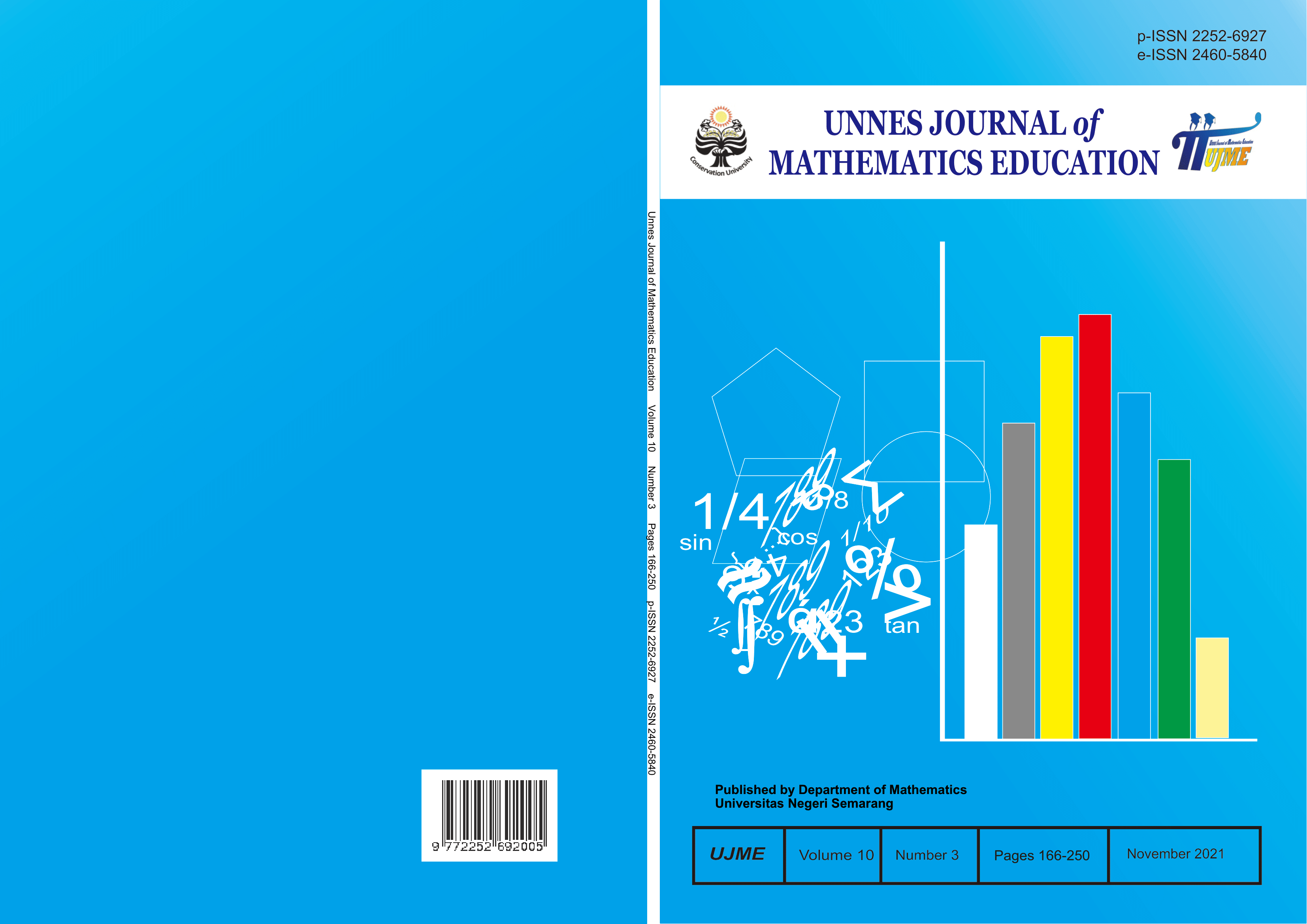Mathematical Communication Ability with Brain-Based Learning Model in Terms of Gender
##plugins.themes.academic_pro.article.main##
Abstract
Mathematical communication ability is one of the basic skills standards in mathematics. However, mathematical communication ability with students is still low. This can be seen from the work of students who still have difficulty expressing mathematical problems with mathematical symbols and have difficulty interpreting mathematical ideas in writing. It seems that students find it difficult to express mathematical ideas into writing. This study aims to (1) determine the attainment of the classic dimension of the ability of mathematics students to communicate through the Brain-Based Learning model (2) compared the ability of mathematics based on gender through the Brain-Based Learning model (3) to describe the ability of mathematics students to communicate through gender. This study uses a mix method with a sequential Explanatory. The population is the eighth grade high school student of State 31 at the same time. The sample in this study is a class VIII B student determined by random sampling techniques. The subject of this study was taken on the basis of the student gender. There are six students, three male students and three female students. The results of this study show that: (1) the ability of students to communicate mathematically in Pythagorean matter through the Brain-Based Learning model reaches the classical dimension (2) there is no significant difference in the ability of students to communicate mathematically between men and women through the Brain-Based Learning model (3) Women are better at explaining the idea of the situation and the mathematical relationship in writing with real things, images, graphics, and algebra, and also women are better at creating concepts, formulating arguments, and generalization than men. But in terms of connecting real things, images, and diagrams to the idea of mathematics and also in terms of expressing everyday events in language or the symbol of mathematics between students and girls there is no significant difference.
##plugins.themes.academic_pro.article.details##
References
Creswell, J. & P. V. Clark. (2013). Designing and Conducting Mixed Methods Research. Los Angeles: SAGE Publications.
Dewi, N. R. (2013). Peningkatan Kemampuan Koneksi Matematis Siswa Melalui Brain-Based Learning Berbantuan Web. In Prosiding SNMPM Universitas Sebelas Maret 2013. Tersedia di http://math.fkip.uns.ac.id/wp-content/uploads/2014/06/Ruang-4.pdf [diakses 08-10-2018].
Duman, B. (2006). The Effect of brain-based instruction to improve on students’ academic achievement in social studies instruction. 9th International Conference on Engineering Education, 24: 17-25.
Isnaniah, I. (2018). Komunikasi Matematis dalam Pembelajaran Berdasarkan Gender. HUMANISMA: Journal of Gender Studies. 1(2): 13-23.
Jensen, E. (2008). Brain Based Learning. Terjemahan Narulita Yusron. Yogyakarta: Pustaka Pelajar.
Munib, A., Budiyono, & S. Suryana. (2012). Pengantar Ilmu Pendidikan (Rev ed.). Semarang: UPT UNNES Press.
NCTM. (2000). Principles and Standard for School Mathematics. NCTM, Inc.
Saleh, S. (2012). The effectiveness of Brain-Based Teaching Approach in Dealing
with The Problems of Students‟ Conceptual Understanding and Learning
Motivation Towards Physics. Educational Studies. Vol. 38(1): 19-29.
Tersedia di http://dx.doi.org/10.1080/03055698.2011.570004. [diakses pada 13-09-2018].
Sugiyono. (2016). Metode Penelitian Pendidikan Pendekatan Kuantitatif, Kualitatif, dan R&D. Bandung: ALFABETA.
Sukoco, H dan A. Mahmudi. (2016). Pengaruh Pendekatan Brain-Based Learning terhadap Kemampuan Komunikasi Matematis dan Self-Efficacy Siswa SMA. PHYTAGORAS: Jurnal Pendidikan Matematika, 11(1): 11-24.
Susento. (2006). Mekanisme Interaksi Antara Pengalaman Kultural-Matematis, Proses Kognitif, dan Topangan dalam Reivensi Terbimbing. Disertasi. Surabaya: Unesa.
Triyadi, R. (2013). Kemampuan Matematis ditinjau dari Perbedaan Gender. Tesis (tidak diterbitkan). Bandung: FPMIPA Universitas Pendidikan Indonesia. Tersedia di http://repository.upi.edu/id [diakses pada 19-07-2018].
Umar, W. (2012). Membangun Komunikasi Matematis dalam Pembelajaran Matematika. Infinity Journal, 1(1): 1-9.
